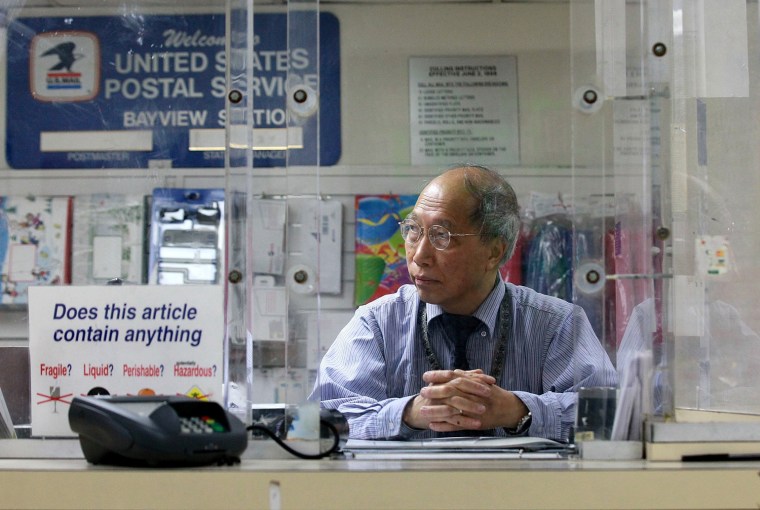While the iconic small-town post office may become scarcer, urban areas also will be hit heavily by the Postal Service's plans to eliminate up to 10 percent of its retail offices nationwide.
Most of the attention from this week's announcement has focused on rural post offices, such as this story pointing out that long-distance hikers could have a harder time if many rural outposts are shut down.
But as our partners at 24/7 Wall St. have pointed out, hundreds of locations in dozens of big and midsized cities also are on the list of potential closures.
Here are the top 10 cities where urban post offices could disappear, accorinding to 24/7 Wall St.:
- New York. May close 34 post offices.
- Washington, D.C. May close 19 offices.
- Philadelphia. May close 14 offices.
- Cleveland, tied for 3rd place. May close 14 offices.
- Chicago, tied for 3rd place. May close 14 offices.
- Detroit. May close 13 offices.
- Los Angeles. May close 12 offices.
- Pittsburgh. May close 10 offices.
- Baltimore, tied for 8th. May close 10 offices.
- Houston. May lose nine offices.
The reasons for the closures include a possible loss of nearly $7 billion this fiscal year, a sharp drop in business due to e-mail, and more people doing postal business online and in local businesses.
“Today, more than 35 percent of the Postal Service’s retail revenue comes from expanded access locations such as grocery stores, drug stores, office supply stores, retail chains, self-service kiosks, ATMs and usps.com, open 24/7,” said Postmaster General Patrick Donahoe in a news release. “Our customer’s habits have made it clear that they no longer require a physical post office to conduct most of their postal business.”
The post office maintains that delivery will continue as normal, Monday through Saturday, regardless of rain, sleet, snow or budget cuts.
